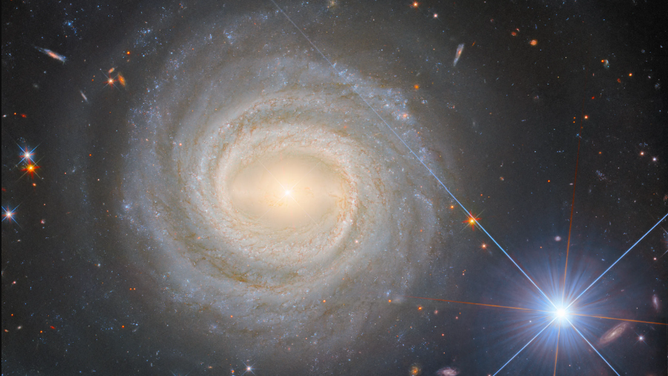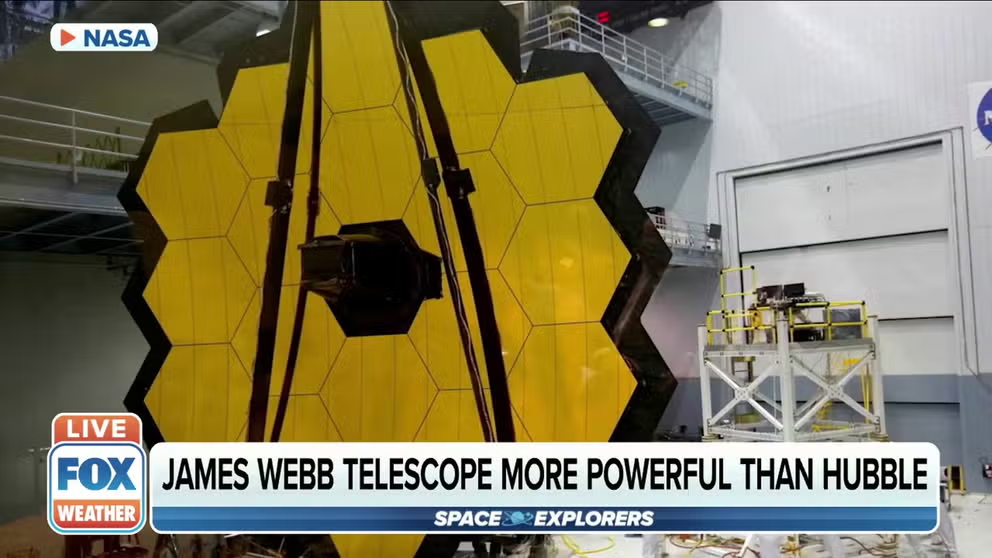Hubble telescope reveals illusionary tale of spiral galaxy and bright star
The Hubble Space Telescope was deployed into operation in 1990 and was the first major U.S. telescope in space. Both astronaut and robotic missions have extended its operational life well beyond its scheduled lifespan. NASA’s James Webb Telescope joined the Hubble in late 2021.
James Webb Space Telescope more powerful than Hubble
Moving at a quarter of a mile per second in space, the James Webb Space Telescope got its golden wings on January 8 in the final stage of its deployment since launch.
WASHINGTON – The latest Hubble image released by NASA and its counterparts at the European Space Agency shows a spiral galaxy some 130 million light-years away from Earth but also a bright star in the foreground.
The group of stars and solar systems is known as NGC 3783 and is part of a galaxy group that uses the same name.
The NGC 3783 group is estimated to contain some 47 galaxies, and NASA said it is fairly early in its evolution.
In the image, a brilliant celestial object is also pictured, which is known as star HD 101274.
The star is estimated only to be some 1,530 light-years away from Earth, meaning that the celestial object is much closer to our globe than the galaxy.

Hubble captures image of a bright galaxy and nearby star
(ESA / NASA)
JAMES WEBB SPACE TELESCOPE WON’T BE RENAMED FOLLOWING INVESTIGATION INTO GOVERNMENT DISCRIMINATION
According to NASA, the star is about 85,000 times closer to Earth than NGC 3783, but the image makes the two appear to be much closer.
Due to the telescope, stargazers can see ultraviolet light and X-rays mixed with interstellar dust within the galaxy.
The Hubble has two primary camera systems that produce images with a broad range of wavelengths.
NASA’s James Webb Telescope joined the Hubble in late 2021 and is considered to be significantly more powerful than its counterpart.
"Webb often gets called the replacement for Hubble, but we prefer to call it a successor. Hubble’s science pushed us to look to longer wavelengths to ‘go beyond’ what Hubble has already done, NASA stated.
LISTEN TO THE HAUNTING SOUNDS OF A BLACK HOLE
The Hubble Space Telescope was deployed into operation in 1990 and was the first major U.S. telescope in space.
Missions performed by astronauts and robots have extended the telescope’s operations well beyond its scheduled lifespan.
NASA estimates that the telescope could be in operation well into the 2030s when it is expected to re-enter Earth’s atmosphere.
Rarely seen prelude to supernova captured by James Webb Space Telescope
The luminous, hot star Wolf-Rayet 124 (WR 124) is prominent at the center of the James Webb Space Telescope’s composite image combining near-infrared and mid-infrared wavelengths of light from Webb’s Near-Infrared Camera and Mid-Infrared Instrument.

